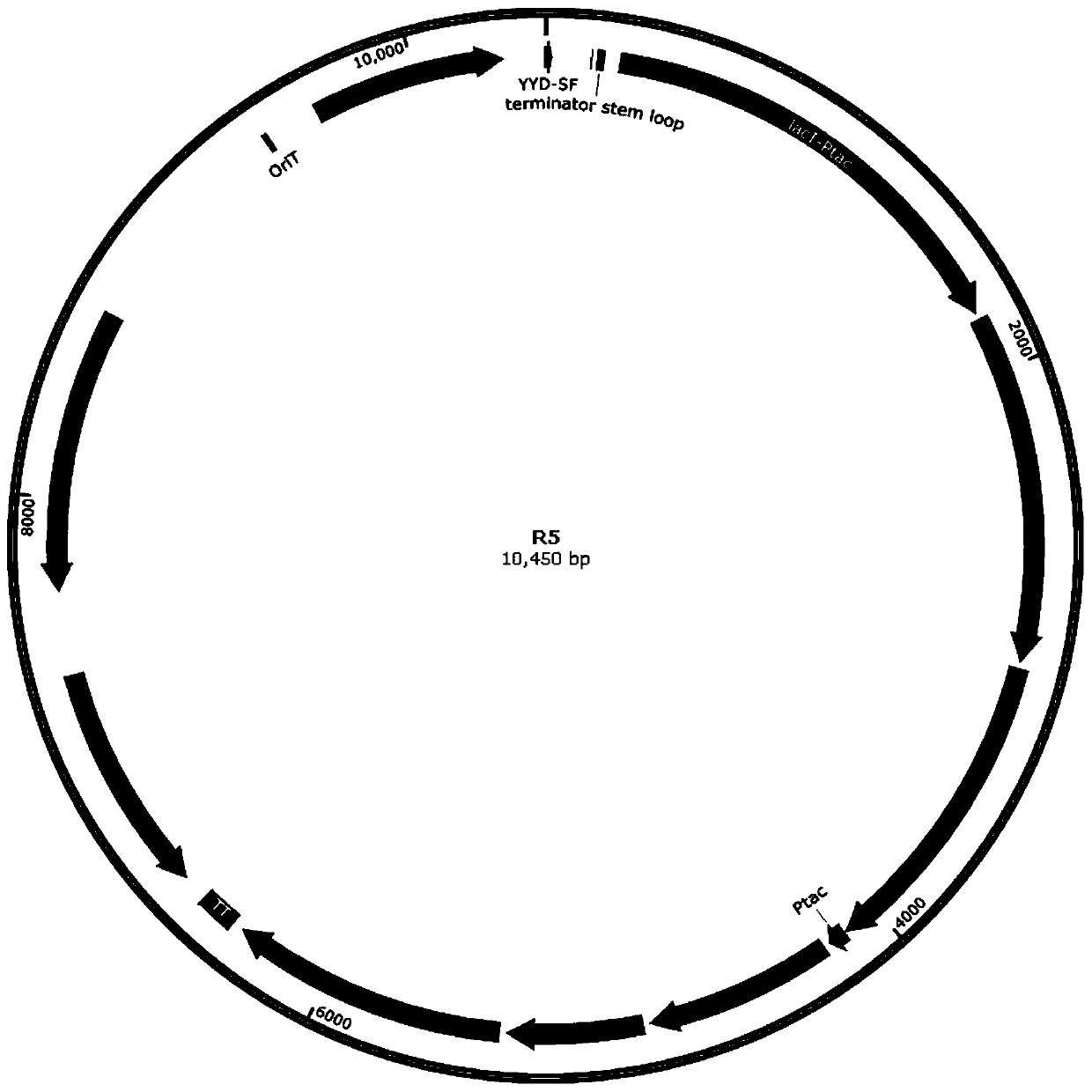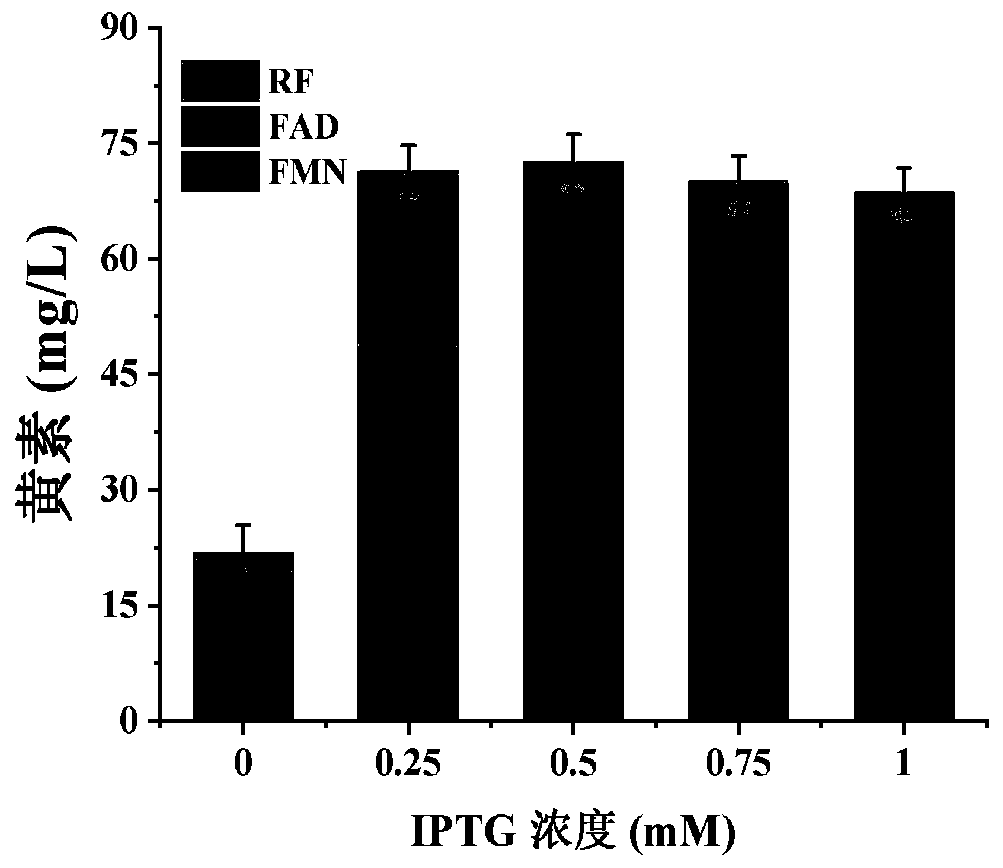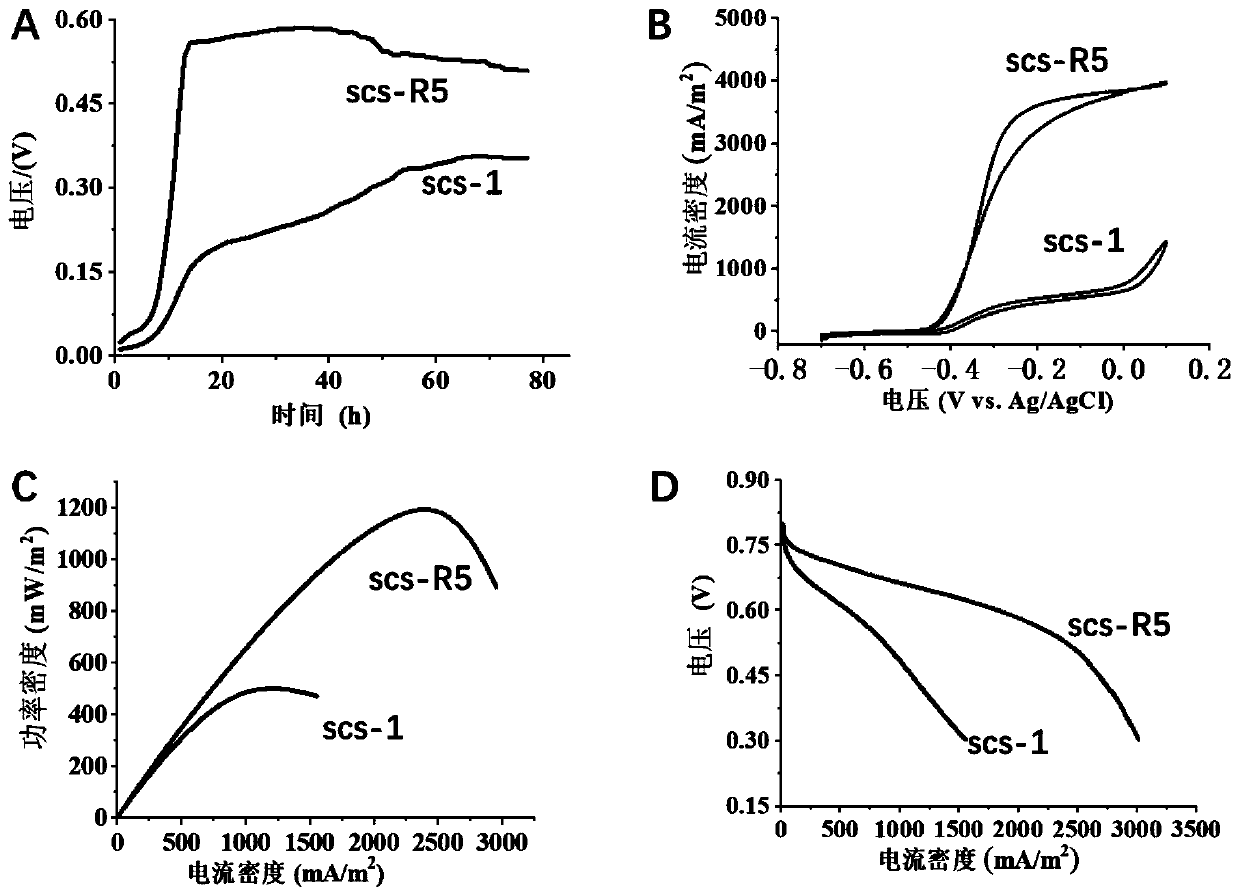Recombinant shewanella algae capable of producing riboflavin and application of recombinant shewanella algae in electricity production
A technology of Shewanella and riboflavin, which is applied to the recombinant seaweed Shewanella and its application in electricity production, can solve the problems of high cost, low yield, unfavorable industrial application of riboflavin, etc., and achieve high yield , Improving power production capacity, and the effect of power production capacity improvement
- Summary
- Abstract
- Description
- Claims
- Application Information
AI Technical Summary
Problems solved by technology
Method used
Image
Examples
Embodiment 1
[0038] Construction and expression of a riboflavin-producing recombinant algae Shewanella:
[0039] The five target genes ribA, ribC, ribD, ribE, and ribH in the flavin synthesis pathway were connected to the vector pyydt to obtain the recombinant plasmid R5, and its plasmid map is as follows: figure 1 shown.
[0040] The nucleotide sequence of the gene ribA is shown in SEQ ID NO.1;
[0041] The nucleotide sequence of the gene ribC is shown in SEQ ID NO.2;
[0042] The nucleotide sequence of the gene ribD is shown in SEQ ID NO.3;
[0043] The nucleotide sequence of the gene ribE is shown in SEQ ID NO.4;
[0044] The nucleotide sequence of the gene ribH is shown in SEQ ID NO.5;
[0045] The nucleotide sequence of the vector pyydt is shown in SEQ ID NO.6
[0046] The nucleotide sequence of the loaded recombinant plasmid R5 is shown in SEQ ID NO.7;
[0047] The resulting recombinant plasmid R5 was transformed into Escherichia coli WM3064 competent cells (commercial strains)...
Embodiment 2
[0051] Application of Recombinant Bacteria scs-R5 in Electricity Production
[0052] Streak activation of the constructed recombinant strain scs-R5 and the wild-type strain scs-1, and inoculate the recombinant strain scs-R5 in LB liquid medium containing kanamycin (concentration 25 μg / mL) to obtain first-grade seeds liquid.
[0053] Take 20 mL of the primary seed liquid and transfer it to 400 mL of anolyte (kanamycin concentration 25 μg / mL), add the inducer IPTG to a final concentration of 0.5 mM, and cultivate overnight to obtain the fermentation liquid 1.
[0054] The wild-type strain scs-1 was fermented by the same method, without adding antibiotics and inducers to the culture medium and anolyte, and fermented liquid 2 was obtained after overnight culture.
[0055] Anolyte configuration:
[0056] 1) 5XM9 solution: 30g / L anhydrous disodium hydrogen phosphate, 15g / L anhydrous potassium dihydrogen phosphate, 5g / L anhydrous ammonium chloride, 2.5g / L sodium chloride, accurately ...
Embodiment 3
[0065] Application of Recombinant Bacteria scs-R5 Combined with Anode Material in Electricity Production
[0066] Common anode materials in microbial fuel cells include carbon cloth, conductive cotton, stone-ground electrodes, etc. The electrode selected in the present invention is conductive cotton, which has a large specific surface area, which is very conducive to the attachment and reception of bacteria Electronics, in addition, in order to enhance the conductivity of conductive cotton, carbon nanotube conductive cotton composite electrode (CNT-CC electrode) is selected in this experiment. Percentage is 0.2%), add surfactant sodium dodecylbenzene sulfonate (SDBS), the mass percentage of SDBS is 1%, ultrasonic treatment 30min, obtain the dispersion liquid 2 that contains surfactant, soak conductive cotton in above-mentioned Put it in the dispersion liquid 2 for 30 minutes, take it out, put it in an oven to dry, and obtain a CNT-CC electrode, which can be used for assembling...
PUM
| Property | Measurement | Unit |
|---|---|---|
| Thickness | aaaaa | aaaaa |
| Thickness | aaaaa | aaaaa |
Abstract
Description
Claims
Application Information
 Login to View More
Login to View More - R&D
- Intellectual Property
- Life Sciences
- Materials
- Tech Scout
- Unparalleled Data Quality
- Higher Quality Content
- 60% Fewer Hallucinations
Browse by: Latest US Patents, China's latest patents, Technical Efficacy Thesaurus, Application Domain, Technology Topic, Popular Technical Reports.
© 2025 PatSnap. All rights reserved.Legal|Privacy policy|Modern Slavery Act Transparency Statement|Sitemap|About US| Contact US: help@patsnap.com



